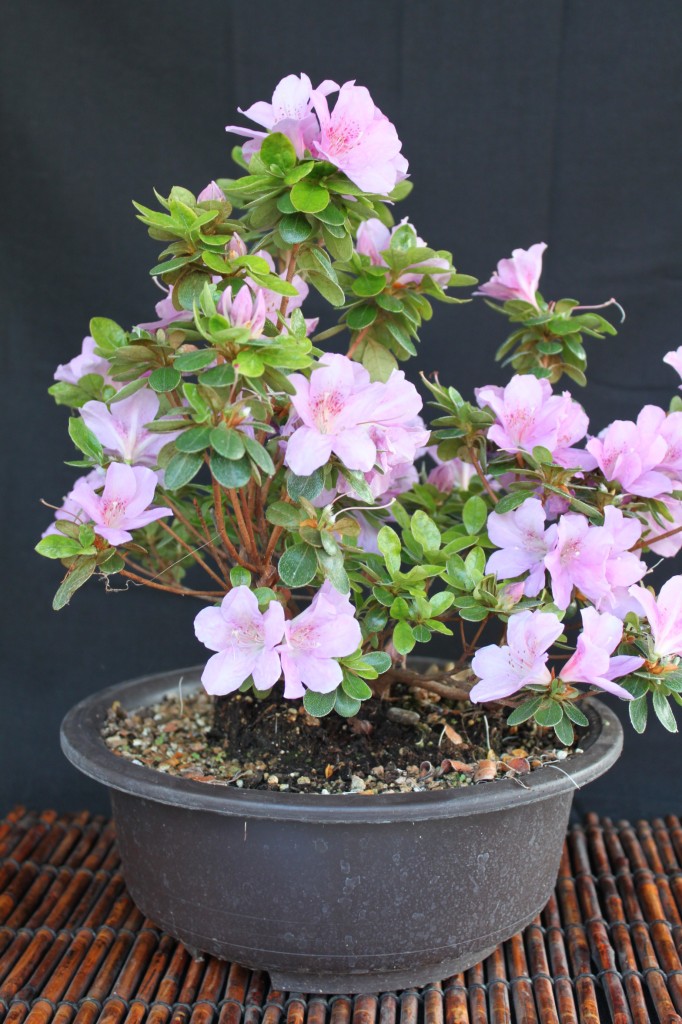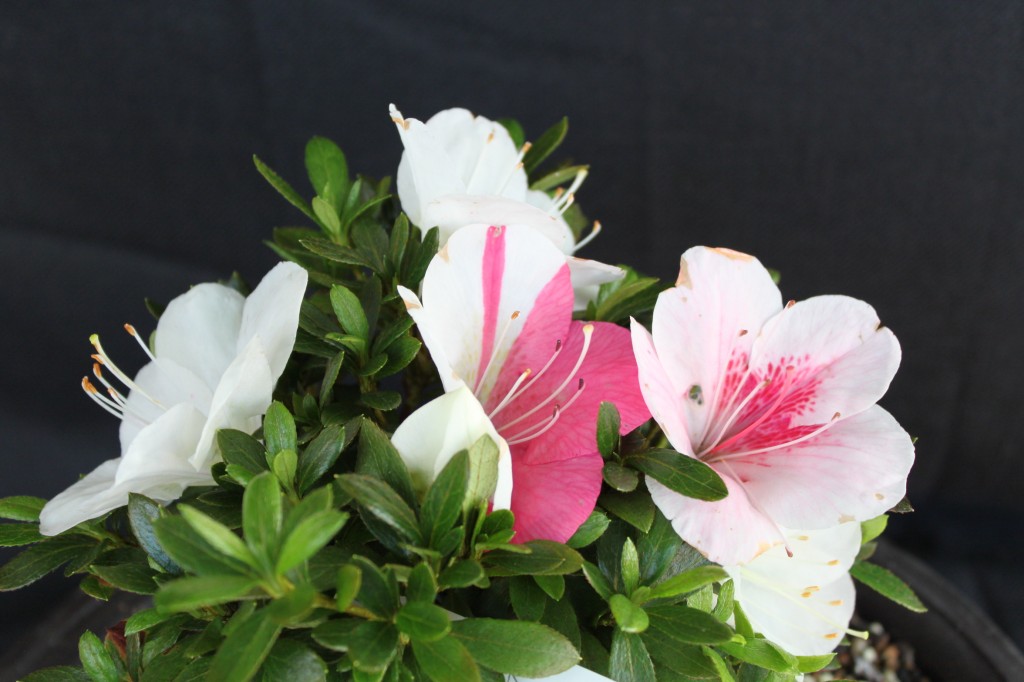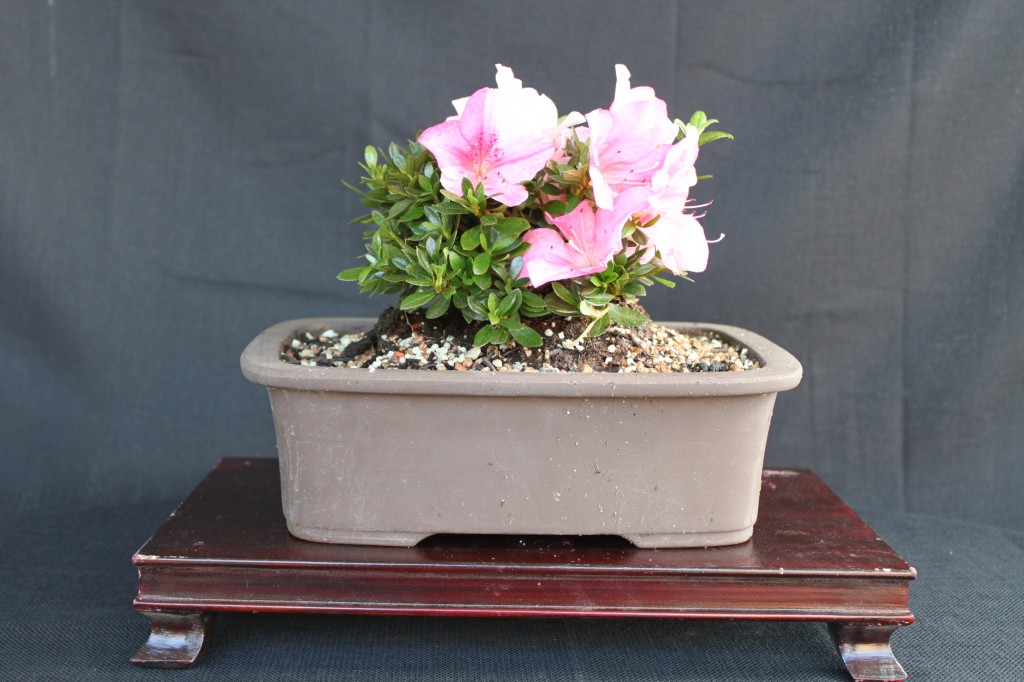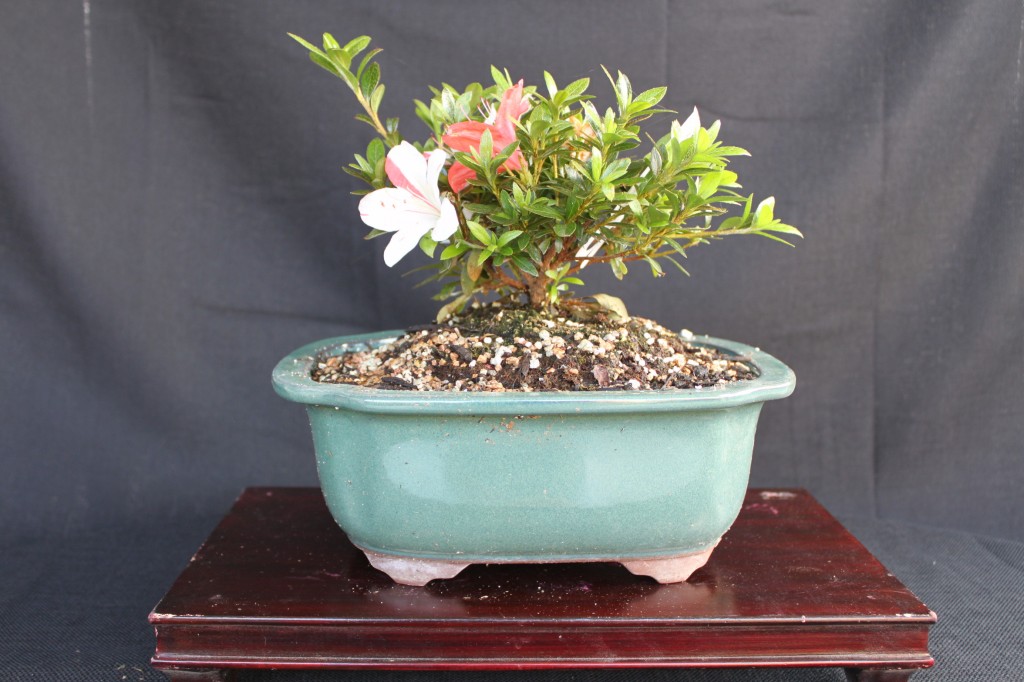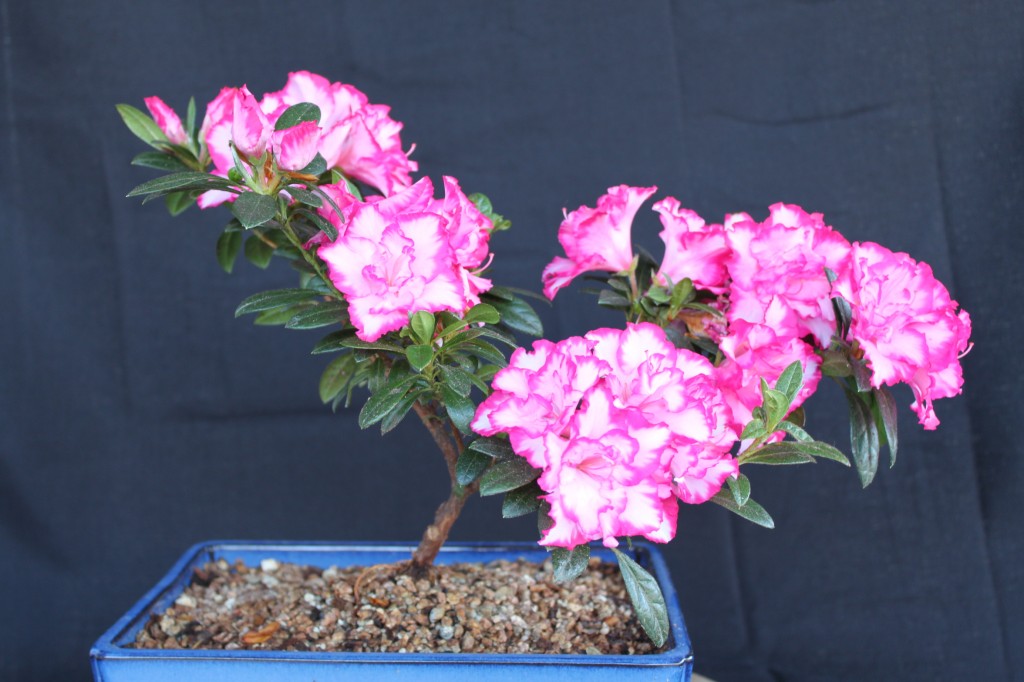Azalea Bonsai
Azalea Bonsai Creation and Care
In the world of bonsai, there are few things more beautiful than an Azalea bonsai in full bloom. No other plant can boast a floral display to equal that of a healthy Azalea. Very few bonsai growers work with Azaleas because of the difficulty of keeping them healthy. There are, however, a few simple secrets that will allow just about anyone who is interested to grow a beautiful Azalea bonsai.
Varieties of Azalea
Azaleas are a group of small to medium sized shrubby plants from the genus Rhododendron, and are found in most temperate areas in North America, Europe and Asia. They are almost always broadleaf evergreens, and almost always feature showy flowers. The primary distinction between Rhododendrons and Azaleas is in the way the flowers are presented. In most Rhododendrons the flowers originate in clusters of three at the end of each branch; in true Azaleas there is a single flower at the end of each branch. However, in nurseries, Rhododendrons are often called Azaleas. The author has one such “Taiwan Azalea” in his collection, which produces beautiful pink flowers.
For bonsai purposes Azaleas come in roughly three varieties: Satsuki and Kurume, which are native to Japan, and the American Azalea, or Rhododendron, which is used extensively in landscaping in the American Southern States. The American varieties usually have larger leaves and flowers than the Japanese varieties. American Azaleas typically bloom in early spring.
Satsuki and Kurume Azaleas typically have small leaves, which makes them better subjects for bonsai. There are also a quite a few Satsuki varieties which produce different colored flowers, usually with a split combination of pink and white or red and white on the same bloom. There are other types that will produce different colored flowers (usually red and white) on the same plant. Satsuki Azaleas were named by the Japanese for their tendency to bloom in June, the sixth month.
Soil and Water
Just about all of the difficulties in keeping Azalea bonsai arise from two factors: 1) Water/soil chemistry; and 2) Soil composition. Most Azaleas come from the nursery potted in a soil which is 100% organic matter. This is done for a couple of reasons. First, the nursery people assume that the buyer is going to plant the Azalea in the ground or in a large container on a patio, and having a 1 gallon sized hunk of organic matter around the roots will help it get established. Second, the Azalea needs a lot of nutrients to produce the blooms, which are its big selling point.
The problem with potting Azaleas this way is organic soil drains very poorly, eventually causing plant death from root rot. If you buy a nursery Azalea, you should repot it at the first opportunity. Bonsai soil for an Azalea should be 40% organic matter, and 60% aggregate for drainage. Japanese growers use a fired clay pellet called Kanuma as the aggregate, but this can be expensive to purchase. The author has had success with decomposed granite and pumice as aggregate, but automotive spill absorbent or cat litter can be substituted if it is made of fired clay pellets and does not have any chemical additives. Azaleas need their soil and water on the acidic side. This can be done initially by adding peat moss to the soil, but the Azalea enthusiast will use a fertilizer for acid loving plants, or some other way to lower the pH, especially if there is alkaline water. You should not use artificially softened water, or try adding pool chemicals to the water supply. The salt buildup in the soil will kill the Azalea. Some people will add orange peels or old tea bags to their watering cans to acidify the water, and this seems to work well, but be careful . Start with a small amount to see how the Azalea handles it.
Potting
If you are potting a nursery Azalea into a bonsai pot, consider using a pot that is a little large by bonsai standards. The additional soil volume will give the plant room to grow, and will also give it a reserve against the effects of watering and fertilizer errors. Azaleas tend to form dense masses of fine, fibrous roots. This makes root pruning relatively easy, but be careful. These roots are easily torn and damaged, so try to avoid using a root hook or cultivator in root pruning. Azalea root density also makes them vulnerable to root rot, as well as problems with them becoming potbound and the soil becoming overly dry. Once they are potted, check them every so often to make sure the soil is not too wet or too dry. Either one is an indicator of root problems, which are the number one killer of Azalea bonsai.
Fertilizer/Feeding
The author has had the best success with organic fertilizers such as blood meal and bone meal. Blood meal provides nitrogen for leaf growth, and bone meal provides phosphorus for bud formation and flowering. Timing of fertilizing depends on when the Azalea bonsai flowers. Satsuki Azaleas flower and May and June, and should receive bone meal in early spring, and blood meal later in the year. With Rhododendrons and American hybrids, you may want to start feeding bone meal in late winter where winters are mild, since flowering can begin as early as March.
Location
Azaleas should be kept outdoors, but they should be sheltered from direct sunlight and strong wind. While some Azaleas are called “indoor Azaleas,” the reality is that an indoor Azalea should be kept in a greenhouse or a conservatory.
Bonsai Training
Azaleas can be shaped into just about any bonsai style. Most bonsai artists will not shape one as a windswept or cascade style, as these do not reflect the natural growth habit of the Azalea. Wiring an Azalea should be done with care. The bark is easily damaged. Some bonsai masters will wrap the wire in tissue paper before applying it to an Azalea to protect the bark. Be careful bending branches. While young growth is usually pretty flexible, the wood can be brittle in older growth. You should prune your Azalea bonsai in the spring, after flowering (for those varieties that flower in winter or early spring) when the tree starts to produce vegetative growth. Azaleas are basally dominant, rather than apically dominant. This means that they will produce more growth on the bottom of the tree than the top. Keep this in mind while pruning. Some growers advocate removing the flowers to encourage leaf growth, but you can simply deadhead the blooms as they start to fade.
Use of the techniques here will result in a beautiful Azalea bonsai that will give enjoyment for many years to come.

